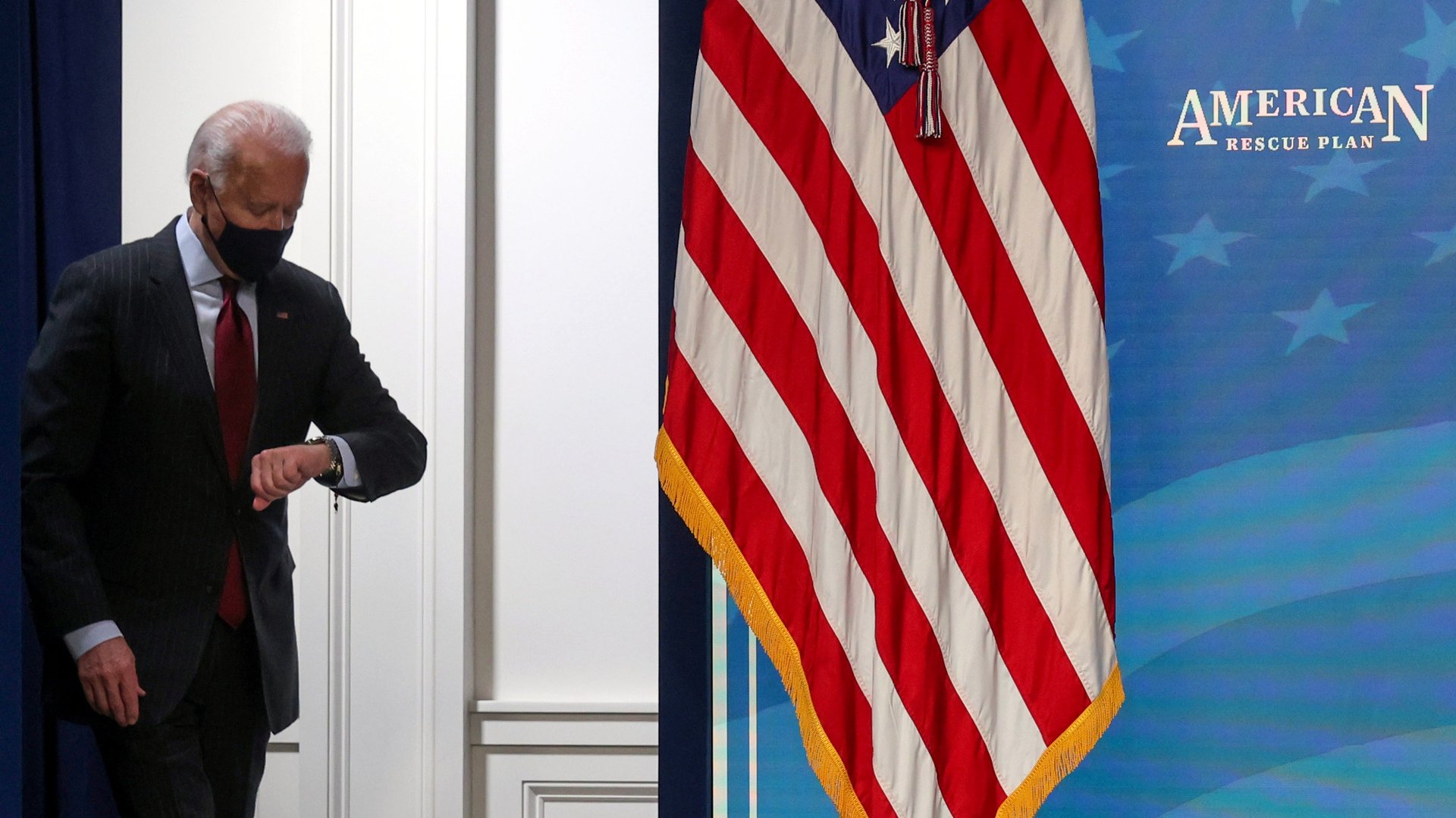How to make the US stimulus better
Is $1.9 trillion too much?


Is $1.9 trillion too much?
Work began in earnest this week on stimulus legislation designed to pull the US out of the pandemic recession, a grab bag bill that includes funding to boost vaccine distribution, aid to vulnerable people and businesses, and measures to bolster working families in the medium-term.
The bill is arriving alongside positive news on two fronts: The daily incidence of new US Covid-19 infections is falling precipitously, in part because of the deployment of effective vaccines throughout the country. And the economy continues to churn along, with forecasters predicting annual growth in 2021 as high as 6.5%. Now, some analysts are arguing that the stimulus package is too big and should be reduced.
Those who witnessed the slow recovery from the 2008 financial crisis know the danger of mistaking “green shoots” for sustainable recovery. At the same time, the different dynamics of the pandemic recession mean that recovery should be faster, since many household and businesses aren’t facing massive debt overhangs the way they did after the housing market collapsed.
But almost 15 million Americans still can’t work because of the pandemic, and some 10 million more people are unemployed now than they were a year ago. Jobless workers requesting unemployment benefits actually rose last week. And the recovery is quite bifurcated, according to real-time estimates: While employment has actually increased among top earners, middle- and low-income people still see major jobs gaps. More than a third of small businesses remain closed compared to this time last year. All this will leave behind scar tissue—debt, overdue bills, lost savings—that will drag on the economy in the future.
The main fear for a too-big bill is that additional government spending will outstrip the needs of the economy and lead to excessive inflation. But even careful analysis of this possibility is far from conclusive, and given a decade of failing to meet the Federal Reserve’s inflation targets, modest inflation growth could be good for the economy. Currently, market indicators suggest an inflation rate of 2.1% over the next decade, while the most recent government data reports an inflation rate for urban consumers of just 1.4% over the previous twelve months.
Still, the economic situation appears better than it did just a few months ago. Here are some ways lawmakers can make stimulus legislation more effective and less likely to have negative macroeconomic consequences:
Get trigger happy with state aid
One pleasant surprise is that states and localities have not run deficits as large as what followed the collapse of the housing bubble. The current bill includes some $510 billion in aid to these jurisdictions, but the shortfall they face is estimated to be closer to $100 to $300 billion. While some of this extra funding is intended to boost schools and transit systems facing significant expenses due to the pandemic, less aid may be needed. One way to alleviate concerns of overspending or underspending on aid would be to link generic fiscal aid to economic metrics, like unemployment.
Smooth out pandemic unemployment insurance
Policymakers should also apply the trigger approach to expanded unemployment insurance. Right now, the bill would add a $400 weekly boost to unemployment benefits, but end it in August. Rather than do that, the bill could maintain the existing $300-a-week pandemic bonus, but extend it as long as joblessness is elevated in specific states. That would reduce outlays in the near term, but leave a safety net in place if the recovery stumbles in the months ahead.
Think of the children (and their tax benefits)
One of the most promising features in the bill is a proposal to create a monthly cash allowance for parents, an idea which in theory boasts supporters from both parties. The current plan is to put this in place temporarily for a year. The parliamentary procedure used to pass this bill means permanently extending the program is impossible. But if the real concern here is that too much near-term spending will overheat the economy, lawmakers could use some of that cash to add a second year to a program that promises to dramatically reduce US child poverty.
Who gets a stimulus check?
The amount of direct cash aid that Americans should receive and how it should be targeted has been a major political debate around the stimulus. From an economic perspective, the goal of the policy is to help fill lost income during the recession. The House bill currently phases the checks out for individuals earning between $75,000 to $100,000 a year, and households earning twice that much. That phaseout could be lowered by $25,000 to save $50 billion on the bill. Other measures, like ensuring the checks go only to people whose income fell between 2019 and 2020, could lower the cost further. But some economists, like Claudia Sahm, warn that restricting the checks too bluntly will lead to a less effective stimulus.
What is “necessary” to fight the pandemic?
A related critique of the bill is that some of the elements, like the monthly child allowance or a proposal to increase the federal minimum wage to $15, might be good policy but are not directly related to pandemic recession. That’s a matter of perspective, particularly around measures designed to reduce out-of-pocket healthcare costs during the middle of a health crisis. Ultimately, these elements are intended by the bill’s authors to address the disproportionate impact of the recession on the lowest-income families.